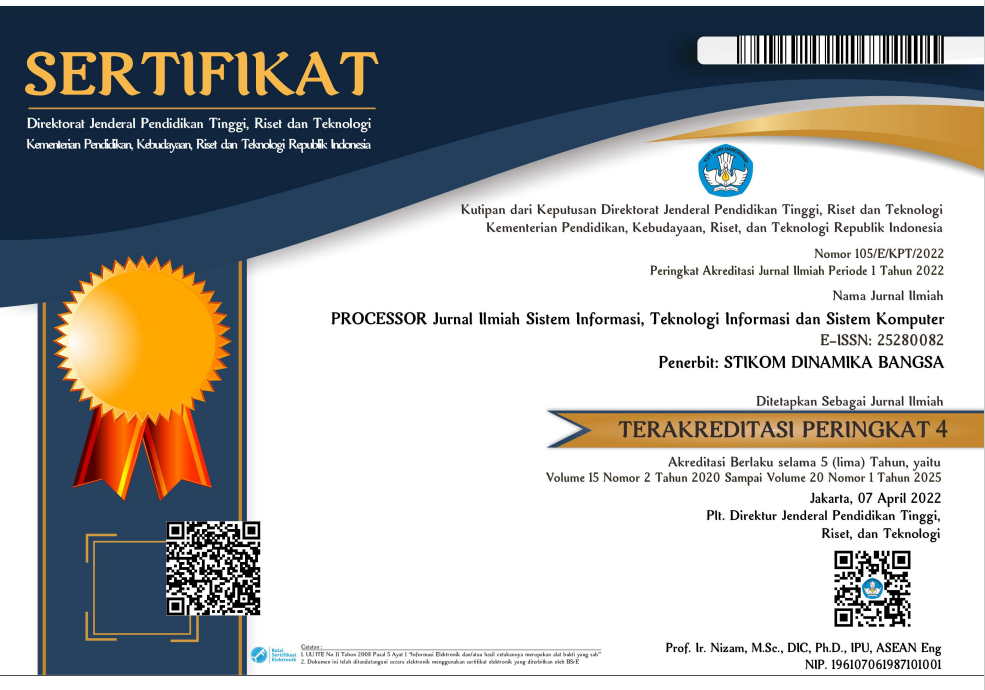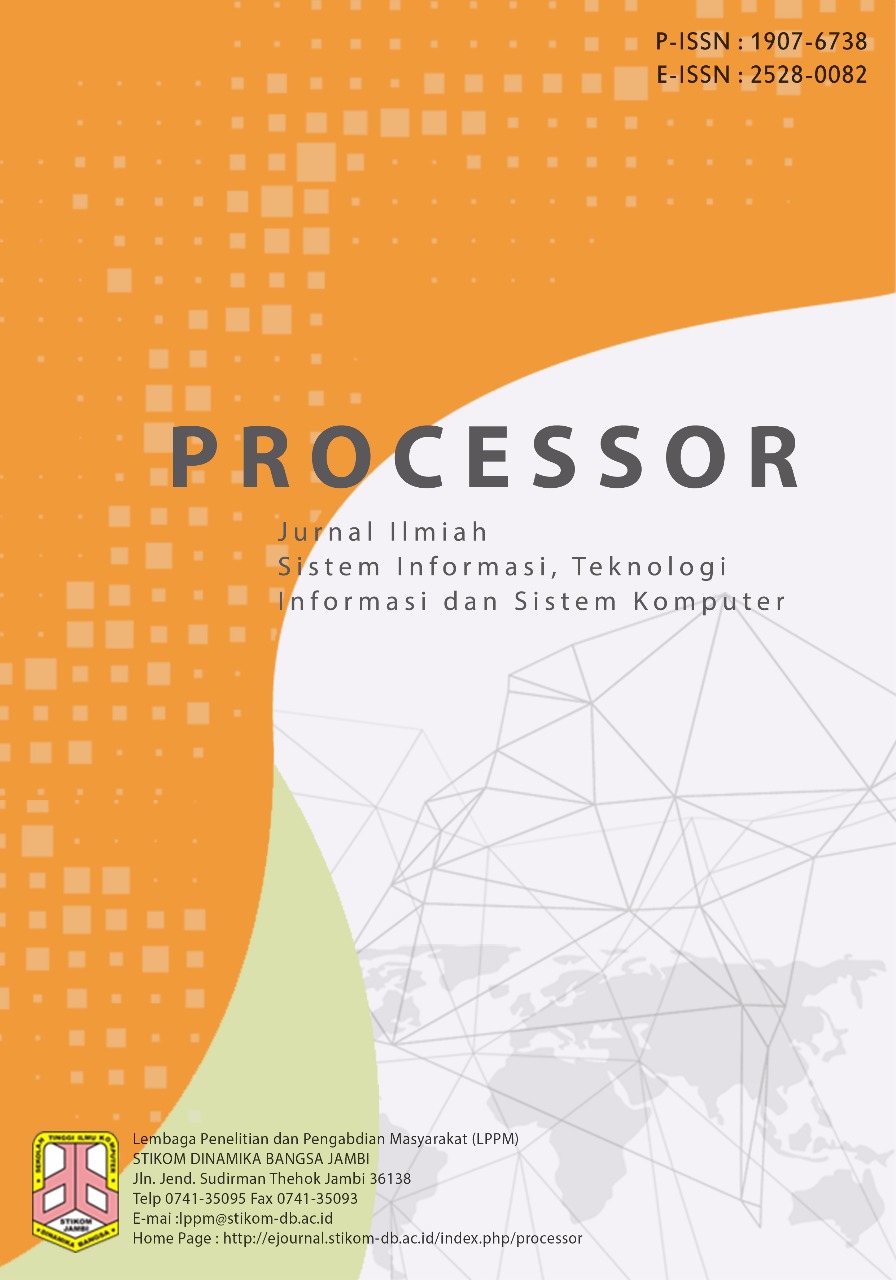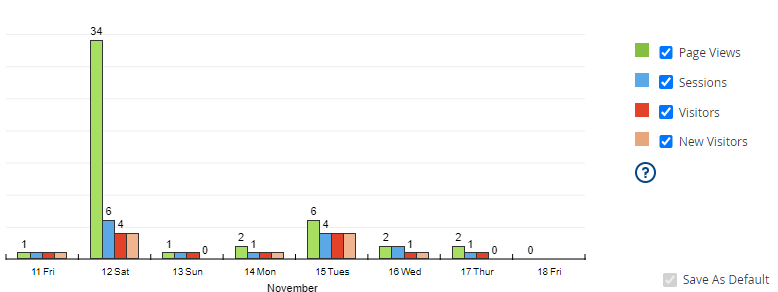Komparasi Algoritma Naïve Bayes Dan Support Vector Machine (SVM) Pada Analisis Sentimen Kebijakan Kemdikbudristek Mengenai Kuota Internet Selama Covid-19
DOI:
https://doi.org/10.33998/processor.2023.18.2.897Kata Kunci:
Analisis sentimen, Naïve Bayes, Support Vector Machine (SVM)Abstrak
Analisis sentimen adalah suatu bentuk kegiatan yang digunakan untuk menganalisis opini masyarakat tentang suatu kejadian seperti kuota bantuan internet Kemdikbudristek selama pandemi Covid-19 melalui salah satu media sosial Twitter. Twitter adalah suatu platform microblogging yang digunakan untuk menulis suatu opini atau pendapat tentang suatu peristiwa yang dapat dijadikan sebagai sumber data yang digunakan. Metode Naïve Bayes dan Support Vector Machine (SVM) merupakan metode dengan pendekatan Machine Learning yang dapat digunakan untuk melakukan analisis sentimen terhadap kebijakan Kemdikbudristek mengenai Kuota Kemdikbud dalam proses mengklasifikasi suatu tweet berdasarkan tingkat emosinya dan mengetahui perbandingan akurasi antara metode Naïve Bayes dengan Support Vector Machine (SVM). Hasil proses analisis sentimen menggunakan Algoritma Naïve Bayes dan Support Vector Machine (SVM) berdasarkan opini masyarakat dalam hal ini pengguna Twitter terhadap kebijakan Kemdikbudristek mengenai Kuota Kemdikbud menghasilkan tingkat akurasi Support Vector Machine (SVM) lebih tinggi dibandingkan Naïve Bayes dengan akurasi sebesar 80%, untuk rata-rata nilai presicion sebesar 80,3%, recall sebesar 80,3% dan f1-score sebesar 80,3%.
Unduhan
Referensi
R. Talib, M. Kashif, S. Ayesha, and F. Fatima, “Text Mining: Techniques, Applications and Issues,” Int. J. Adv. Comput. Sci. Appl., vol. 7, no. 11, pp. 414–419, 2016, doi: 10.14569/IJACSA.2016.071153.
W. Medhat, A. Hassan, and H. Korashy, “Sentiment analysis algorithms and applications: A survey,” Ain Shams Eng. J., 2014, doi: 10.1016/j.asej.2014.04.011.
S. VijayGaikwad, A. Chaugule, and P. Patil, “Text Mining Methods and Techniques,” Int. J. Comput. Appl., vol. 85, no. 17, pp. 42–45, Jan. 2014, doi: 10.5120/14937-3507.
S. Xu, “Bayesian Naïve Bayes classifiers to text classification,” J. Inf. Sci., 2018, doi: 10.1177/0165551516677946.
S. Sulova, “USING TEXT MINING TO CLASSIFY RESEARCH PAPERS,” in International Multidisciplinary Scientific GeoConference Surveying Geology and Mining Ecology Management, SGEM, Jun. 2017, vol. 17, no. 21, pp. 647–654. doi: 10.5593/sgem2017/21/S07.083.
M. D. Alizah, A. Nugroho, U. Radiyah, and W. Gata, “Sentimen Analisis Terkait ‘Lockdown’ pada Sosial Media Twitter,” CSRID (Computer Sci. Res. Its Dev. Journal), 2021, doi: 10.22303/csrid.12.3.2020.143-149.
M. I. Fikri, T. S. Sabrila, and Y. Azhar, “Perbandingan Metode Naïve Bayes dan Support Vector Machine pada Analisis Sentimen Twitter,” SMATIKA J., vol. 10, no. 02, pp. 71–76, Dec. 2020, doi: 10.32664/smatika.v10i02.455.
B. Liu, “Sentiment analysis and opinion mining,” Synth. Lect. Hum. Lang. Technol., 2012, doi: 10.2200/S00416ED1V01Y201204HLT016.
M. Kaya, G. Fidan, and I. H. Toroslu, “Sentiment analysis of Turkish political news,” in Proceedings - 2012 IEEE/WIC/ACM International Conference on Web Intelligence, WI 2012, 2012. doi: 10.1109/WI-IAT.2012.115.
S. L. Ting, W. H. Ip, and A. H. C. Tsang, “Is Naïve bayes a good classifier for document classification?,” Int. J. Softw. Eng. its Appl., vol. 5, no. 3, pp. 37–46, 2011.
K. T. Wahyuni, I. M. O. Widyantara, and N. D. Wirastuti, “Deteksi Tipe Modulasi Digital Pada Automatic Modulation Recognition Menggunakan Support Vector Machine dan Conjugate Gradient Polak Ribiere-Backpropagation,” Maj. Ilm. Teknol. Elektro, vol. 18, no. 2, Aug. 2019, doi: 10.24843/MITE.2019.v18i02.P18.
F. Rahutomo, I. F. Rozi, and H. Setiyono, “Implementasi Support Vector Machine pada Analisa Sentimen Twitter Berdasarkan Waktu,” J. TAM (Technology Accept. Model., vol. 10, pp. 83–88, 2019.
R. Mohammed, J. Rawashdeh, and M. Abdullah, “Machine Learning with Oversampling and Undersampling Techniques: Overview Study and Experimental Results,” in 2020 11th International Conference on Information and Communication Systems (ICICS), Apr. 2020, pp. 243–248. doi: 10.1109/ICICS49469.2020.239556.
S. M. Abd Elrahman and A. Abraham, “A Review of Class Imbalance Problem,” J. Netw. Innov. Comput., vol. 1, pp. 332–340, 2013, [Online]. Available: www.mirlabs.net/jnic/index.html
S. Qaiser and R. Ali, “Text Mining: Use of TF-IDF to Examine the Relevance of Words to Documents,” Int. J. Comput. Appl., 2018, doi: 10.5120/ijca2018917395.
B. R. Aditya, “Penggunaan Web Crawler Untuk Menghimpun Tweets dengan Metode Pre-Processing Text Mining,” J. INFOTEL - Inform. Telekomun. Elektron., vol. 7, no. 2, p. 93, Nov. 2015, doi: 10.20895/infotel.v7i2.35.
M. Straka and J. Straková, “Tokenizing, POS tagging, lemmatizing and parsing UD 2.0 with UDPipe,” in CoNLL 2017 - SIGNLL Conference on Computational Natural Language Learning, Proceedings of the CoNLL 2017 Shared Task: Multilingual Parsing from Raw Text to Universal Dependencies, 2017. doi: 10.18653/v1/k17-3009.
D. S. Maylawati, W. B. Zulfikar, C. Slamet, M. A. Ramdhani, and Y. A. Gerhana, “An Improved of Stemming Algorithm for Mining Indonesian Text with Slang on Social Media,” in 2018 6th International Conference on Cyber and IT Service Management (CITSM), Aug. 2018, pp. 1–6. doi: 10.1109/CITSM.2018.8674054.
S. Y. Ying, P. Keikhosrokiani, and M. P. Asl, “Opinion Mining on Viet Thanh Nguyen’s The Sympathizer Using Topic Modelling and Sentiment Analysis,” J. Inf. Technol. Manag., vol. 14, pp. 163–183, 2022, doi: 10.22059/jitm.2022.84895.






















